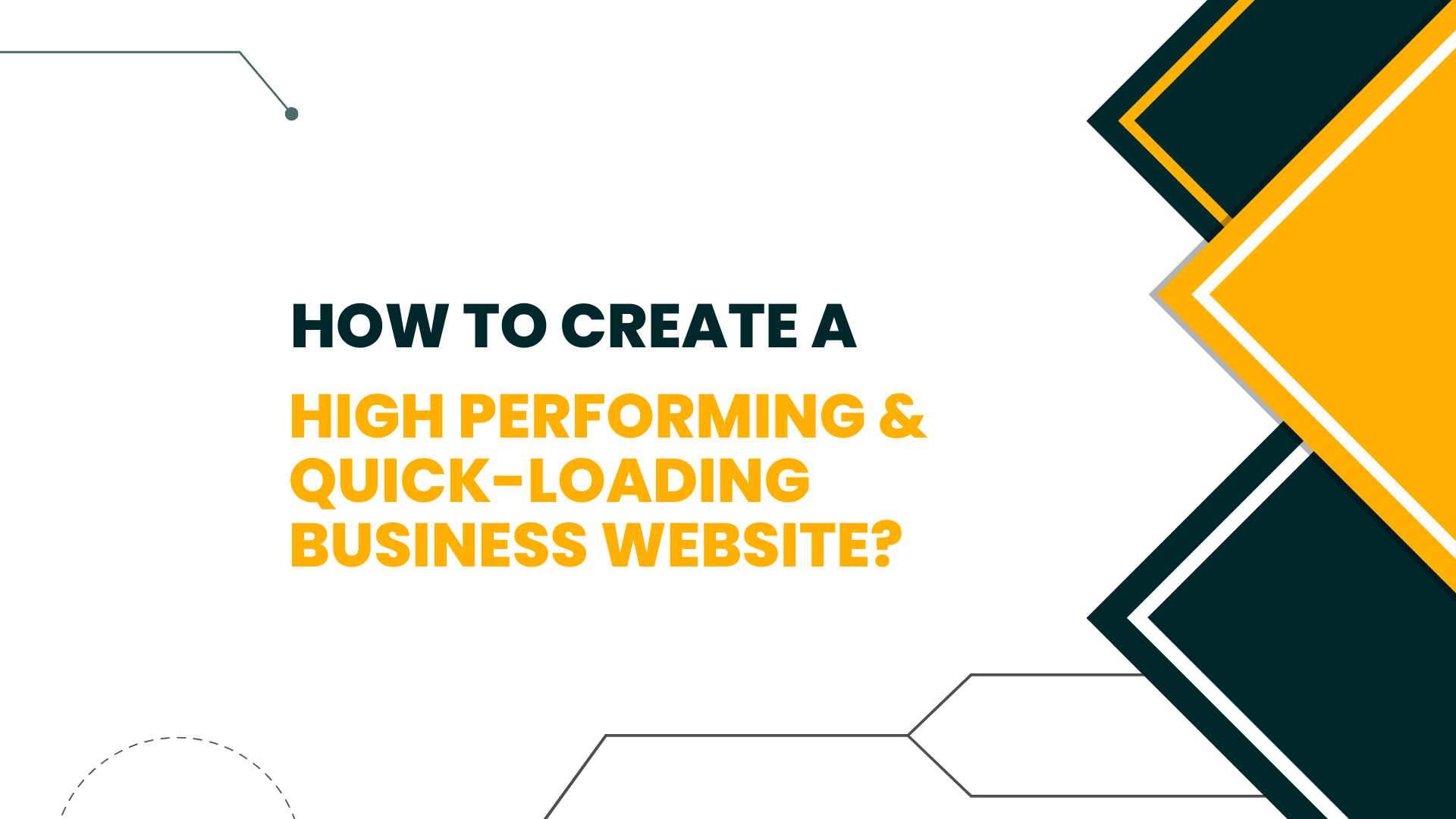Website users judge a website in about 0.05 seconds. So that’s exactly the amount of time you have for creating a perfect impression on your website users and turning the audience into potential long-term clients.
That sounds close to impossible, right? Well, it isn’t. With a high-performing and quick-loading website, you can achieve positive outcomes like many other successful website owners out there.
The only catch? Creating a “high-performing and quick-loading” business website is no easy feat. You most definitely need the expertise of proficient website designers and developers. Plus, you’d need technical SEO assistance, engaging and informative content, stunning, high-resolution graphics, and overall site security too.
Confused? We have got you covered. Here is a step-by-step guide for creating a high-performing, fast-loading website for your business. Bookmark this guide, follow it thoroughly and soon you’ll have an aesthetically-pleasing, fully-functional website for your business.
Read on.
Before you begin – Understand what is “High Performance”
Performance is a subjective issue and can mean different things to different people. For some performance is synonymous with speed. For other outcomes decide performance and a few others also base performance on user experience.
In reality, your website’s performance encompasses all these elements. In general, to be classified as a high-performing website, it has to:
- Load quickly
- Look beautiful
- Offer a seamless user experience
- Achieve the goals (build awareness, increase sales, or generate leads)
Now that we know what is meant by high-performing websites, let’s get straight to the guide.
Step 1 – Right Framework
You must have heard many tech gurus saying that WordPress is the best platform for building a website. While WordPress is definitely a great CMS and website builder, it needs to be evaluated from your business’ perspective.
Another upcoming eCommerce platform is Shopify for small to medium-scale enterprises. If you have a large eCommerce platform that needs a higher degree of customization, you should consider Magento. Similarly, Wix and Squarespace are two other website builders that you can try for creating a basic business website.
Thus, depending on your business needs, you need to find the right framework or technology to build your website on.
For a vast majority of business needs, WordPress is the ideal website-building technology. Being free and open-source, WordPress gives is cost-effective and gives unmatched scope for customization. You get access to thousands of free and paid themes and 54,000+ free and paid plugins to add to your site. Plus, WordPress development is a neat and seamless process and WordPress website maintenance is also easy.
However, to leverage the many benefits of WordPress and build a high-performing and quick-loading WordPress site, there are many parameters that need to be considered right during the development phase. WordPress website development experts who have hands-on experience should thus be engaged to get the desired results.
Step 2 – Benchmarking performance
One of the key prerequisites to building a high-performing website is benchmarking metrics before you begin working on your website.
Monitoring and benchmarking your website’s performance before and after making any changes will help you understand the direct result of those changes.
For example, if you add a new plugin to your website, you might want to check your site’s speed before and after the plugin is activated. If you see a sudden site speed drop after installing the plugin, it should be your cue to optimize the plugin for performance.
Step 3 – Site Speed
As you might already know, site speed is a vital metric for which you need to optimize your website.

A slow-loading website frustrates visitors and drives them away, usually towards competitors. You can check your website speed by using free, yet reliable tools from Google like Google Page Speed Insights.
Depending on the results of the speed test, you can work on the suggestions provided on the Page Speed Insights page to enhance your website’s speed.
For WordPress websites, in general, there are certain performance and speed optimization tips to always keep in mind.
- An image compression plugin should always be used to optimize the imagines.
- Conflicts in JavaScript code should actively be resolved as soon as they are found.
- A caching plugin should definitely be used to speed up the website’s load speed.
If you have high-quality and large-sized images and videos on your website, those media contents should be saved at a separate location instead of the server. You can use the S3 bucket, for example, to store bulky media files on the cloud and improve the site’s load speed.
Step 4 – Bottom-To-Top SEO
Most business owners ignore search engine optimization in the development phase of your website. This is a grave mistake that can prove to be very costly in the long run. While your website is getting built, you need to carry out proper technical search engine optimization.
This is essential to ensure that your website is found, indexed, and ranked correctly for the right keywords by Google and other search engines.
Technical SEO right during the development phase contributes to your website’s searchability and contributes to its performance. Unlike popular opinion, a bottom-to-top SEO approach should be used for proper search engine indexing and ranking. A top-down approach may make it difficult to carry out significant SEO enhancements later on, once the website has grown considerably.
Step 5 – Relevance and Value
One of the key parameters of website performance is the quality of content on your website. Irrelevant content that has little value for the reader would increase your bounce rates even if your website is high-ranking and quick-loading
Thus, while developing a website make sure that the:
- The user interface is intuitive,
- Navigation is simple,
- Content is informational, engaging, and offers value.
Step 6 – Measuring metrics
Once your website is built, you should continue measuring metrics. Some key metrics that you should be measuring and monitoring often include:
- Site speed
- Site performance score
- Bounce rate
- Rankings for primary keywords
- Domain Authority (DA)/ Page Authority (PA) and spam score
- Average session time
Any deterioration in these metrics should be quickly noted and you should find the reasons and remedy them at the earliest.
How can SynergyTop help you build a high-performing website?
SynergyTop is a San Diego-based full-service IT company with a wide range of technology and digital services. With global offices in Los Angeles and Los Altos, we have a team of 50+ experts who can not just design and develop a stunning website for you, but also offer basic to advanced search engine optimization and long-term website maintenance services.
To compliment your high-performing business website, our team can also offer native and cross-platform mobile app development services, eCommerce development services, and custom software development services. We also have dedicated talent for ERP implementation and Enterprise performance management.
Request a quote for our website development and other services.
















